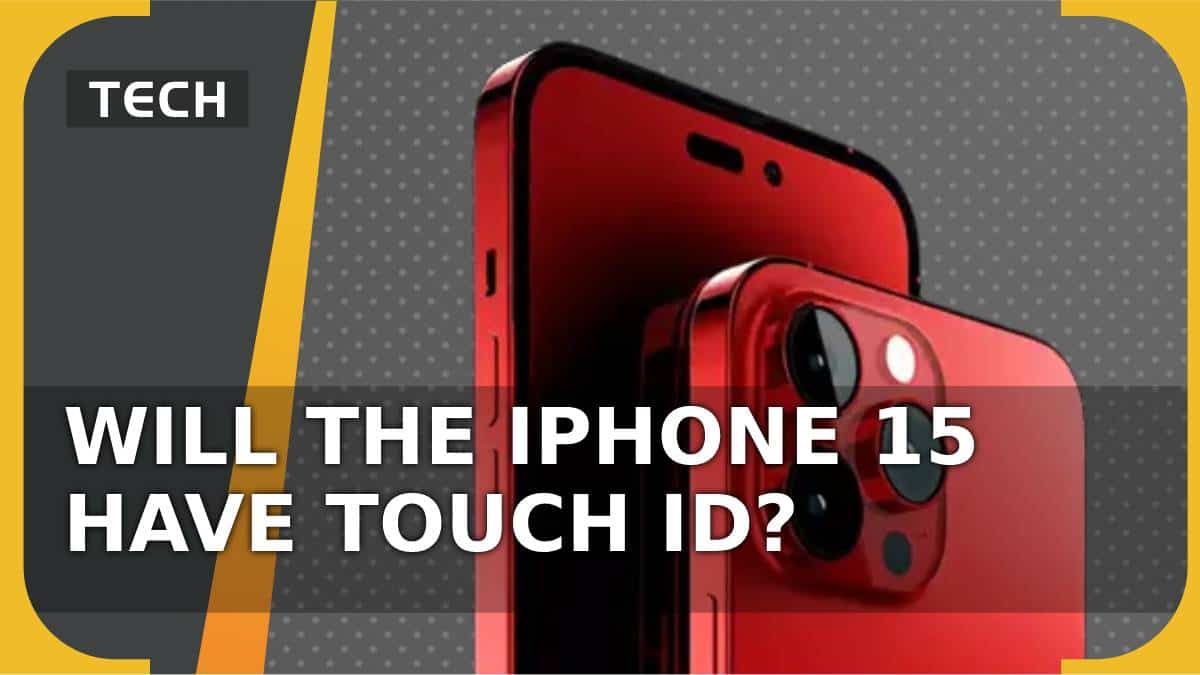You can trust VideoGamer. Our team of gaming experts spend hours testing and reviewing the latest games, to ensure you're reading the most comprehensive guide possible. Rest assured, all imagery and advice is unique and original. Check out how we test and review games here
If you are wondering if Touch ID will be making a return to the new iPhone 15, look no further. We will be examining everything we know so far from rumours to leaks to Apple’s previous approaches to see if we can predict where Apple will fall on this one.
Touch ID is a fingerprint based security system that Apple pioneered. It uses a fingerprint in lieu of a password. You can find Touch ID authentication on all the models from the iPhone 5s through to the iPhone 8 Plus. However, since the arrival of the iPhone X, Apple has switched to Face ID as their main authentication system. This was largely due to the removal of the home button with the arrival of the all-screen design.
It’s not the only major change rumoured for the upcoming iPhone 15. There have also been rumours of USB-C ports swapping in instead of the old Lightning model. Apple have previously overhauled their own designs when they introduced the ‘Dynamic Island‘ with the iPhone 14 Pro series. In addition to several exciting software features, the Dynamic Island supported super fast Face ID recognition.
So, what does this mean for the future of Touch ID?
Will the iPhone 15 have Touch ID?
In short, barring any surprise inclusion of new under-screen technology we don’t think it is likely that the iPhone 15 will have Touch ID. But let’s have a deeper dive into that.
iPhone 15 Touch ID rumors and leaks
Rumors have been circulating that the new direction for iPhone security is a combination of Face ID and Touch ID. There has been talk of Face and Touch ID sensors being placed under the screen in new iPhone designs. Original predictions for the roll out of under-screen sensors suggested we could see it as early as the iPhone 15 model. However, trusted analyst Ming-Chi Kuo has since taken back that prediction, instead suggesting that we won’t see the return of Touch ID for a while yet. Instead he believes that the earliest we can expect the new under-display technology in 2024.
But just because we won’t be seeing any new combined technology, does that mean we won’t see a return to the old classics? The iPhone SE, first released in 2016 and now in its 3rd Generation, has maintained it’s Touch ID authentication throughout the years and updates. Both the 2020 version and the 2022 release maintained their Touch ID capacity.
However, it seems telling that in the seven years since the iPhone SE was first released, and Face ID was introduced with the iPhone X in 2017, Apple have not integrated Touch ID into any of its flagship phones. The iPhone 15’s direct predecessor, the iPhone 14 series, had no Touch ID. Instead, it was entirely reliant on Face ID.
What is Face ID?
Face ID is a form of biometric password that works on two levels. Firstly, the TrueDepth camera embedded in your phone projects thousands of invisible dots onto your face. In doing this, it can create a depth map. Secondly, the camera then creates an infrared map of your face. Your phone then combines the two within the Secure Enclave to create a super detailed image of your face to allow your phone to recognise it and act as password.
Not only this, but Face ID is designed to automatically update to small changes in your appearance. Things like make up, facial hair, pimples and other such small changes will not cause an issue in Face ID recognising your face. If a larger change occurs, for example significant facial hair change, the iPhone will ask you to verify your identity by typing in your passcode. Once you have verified that you are still who it thinks you are, Face ID updates it’s image of you and will work again as normal.
Apple have assured us that the two part process is extremely secure. However, during the COVID pandemic Apple released an ‘enhanced’ version of Face ID to allow the system to work, even with masks. Face ID was already designed to work in a variety of adverse conditions. These included working in the dark, outdoors and indoors, and even working around sunglasses!
Read more: Will the iPhone 15 be waterproof?
While on the surface, this may seem like a good thing that Apple is remaining up-to-date and keeping user experience at the forefront of their priorities, the reality is a little different. While the enhanced version is certainly useful, it reduces the security capacity of Face ID, with a much higher chance of a false recognition.
What does this mean for iPhone security?
Both Touch ID and Face ID are extremely secure. Biometric passwords are based on an aspect of the user’s biology rather than passwords. As such, they are extremely individual and much harder to fool.
However, there are some caveats.
With Touch ID a thief or attacker could use your fingerprint to unlock your phone without your consent. Similarly, a skilled assailant could trick you into looking close up at your phone to enable Face ID recognition.
Face ID is intelligently activated, so it can activate just by tapping the screen or when a notification comes in. If this is something that concerns you, we would recommend making sure that the ‘Require Attention for Face ID’ option in settings is turned ON. If it is turned off, then you don’t even have to be looking at your phone for it to unlock.
While these issues are certainly concerning, they are more towards the extreme end. As such, Apple is unlikely to roll back the Face ID authentication system as overall Face ID is extremely secure and works much faster than Touch ID.
Frequently Asked Questions
Why isn’t Touch ID on iPhone 15?
Touch ID hasn’t been on any iPhone model (barring the iPhone SE 3rd Gen) since the iPhone X. Instead, Apple has pioneered Face ID technology. The next time we see Touch ID will likely be in an integrated system with Face ID technology but that is unlikely to arrive before 2024.






